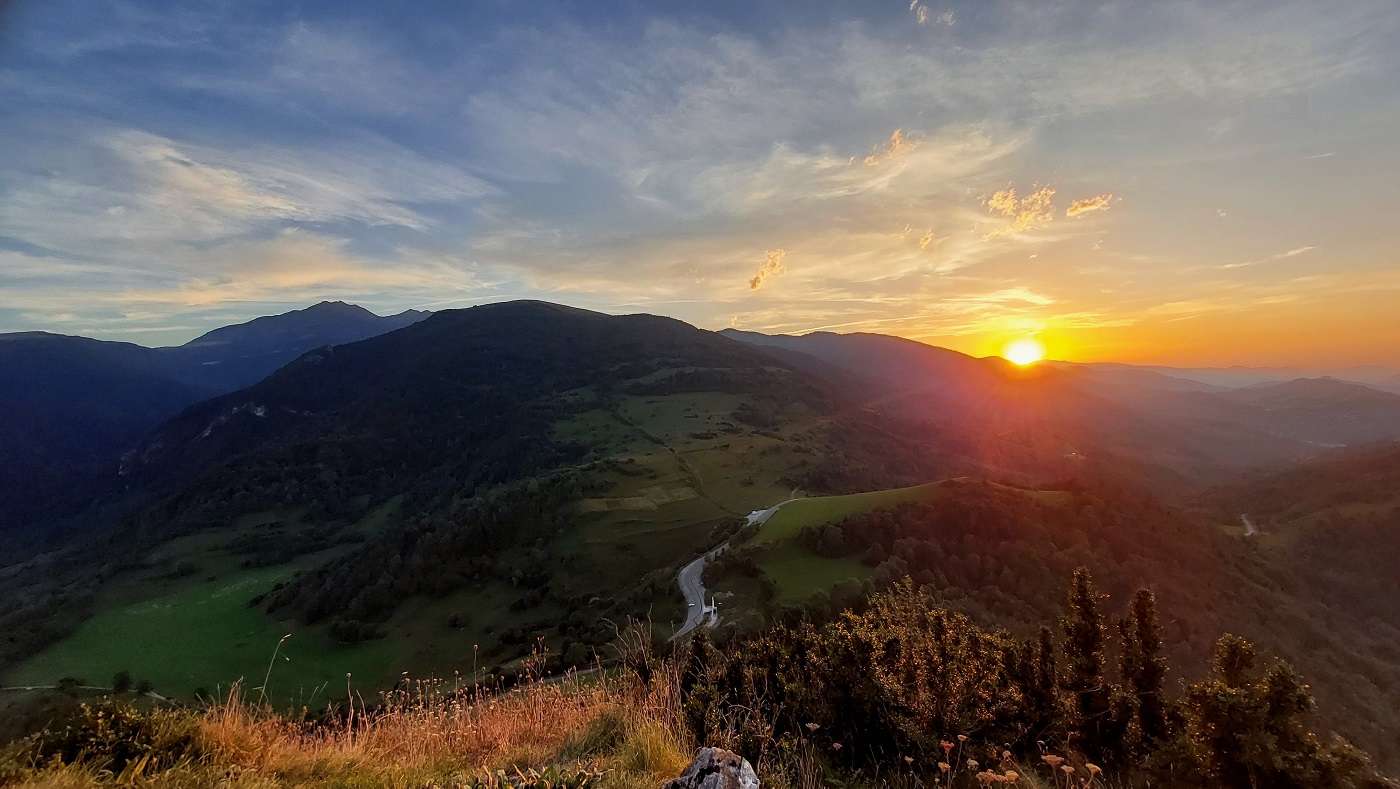
We decided to head east in the French Pyrenees, last summer. Partly to dodge the weather and partly to investigate this region a bit more. And it was a good move! We ended up in Cathar country. A beautiful area with narrow, winding roads, numerous castle ruins perched on mountaintops, charming villages, and a wonderful Mediterranean climate. In this blog post, we share three cycling highlights. These are also easily accessible on foot. And you can certainly ask to include these destinations in your personal itinerary.
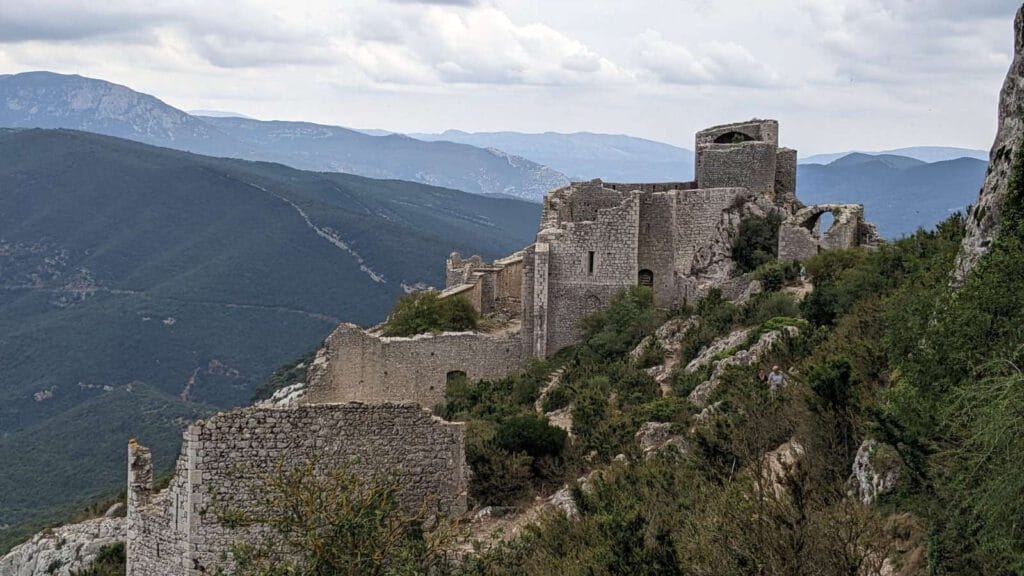
Who were the Cathars?
The Cathars were a religious movement in the 12th and 13th centuries with a large following in the Lanquedoc region. They strove for a pure faith and clashed with the Catholic Church. According to papal teachings, they were heretics who should be persecuted. The Cathars retreated to the mountains and built several castles and fortresses to protect themselves.
For a long time, the Cathars held out, thanks in part to the support of important counts and lords. This lasted until the Pope launched a major crusade in 1209, which ultimately led to the death of the last Cathars in Montségur in 1244. Hundreds of Cathars voluntarily threw themselves into the fire at the stake because they refused to renounce their faith.
Cycling in Cathar Country
The ruins of these fortresses can still be admired in many places. Most of the Cathar fortresses are located in the Aude department, but remnants can also be found in the Ariège.
Cycling in this area is wonderful. The winding roads are generally narrow and well-maintained. The ups and downs are gentle, with the occasional very challenging, steep section. We share three highlights!
- The Climb to Chateau de Peyrepertuse
Perched on a rocky peak lie the remains of this impressive castle. It is best known for being one of the “cinq fils” (five sons) of Carcassone. “Pèirapertusés” means “pierced stone” in Occitan. Legend has it that during the Cathar era, there was a secret entrance in the rock that provided access to the castle. So secret, in fact, that the entrance has still not been discovered.
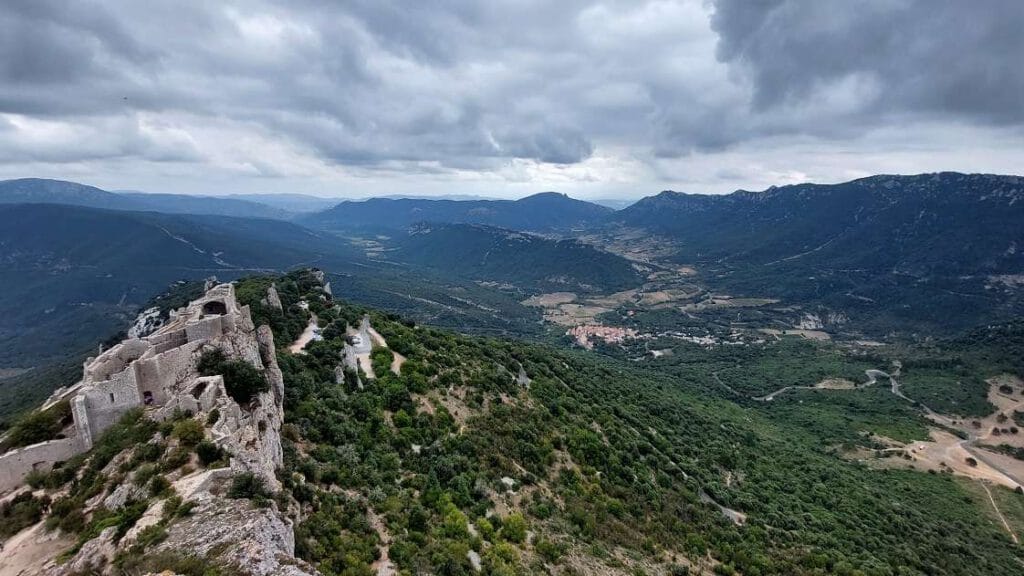
- From the village of Duilhac-sous-Peyrepertuse, it’s a climb of almost 4 kilometers with an average gradient of 9.4%. The last kilometer is particularly challenging, with a gradient of over 12%. It’s the perfect way to end a longer cycling route, where you can burn off all your energy. The photo above shows the road leading to the castle.
- Col de Montségur
At 1059 meters, the pass is one of the highest in Cathar country. It’s also ued in the Tour de France, having been passed by the caravan three times. You can cycle it from two sides, starting gently and finishing relatively steeply.
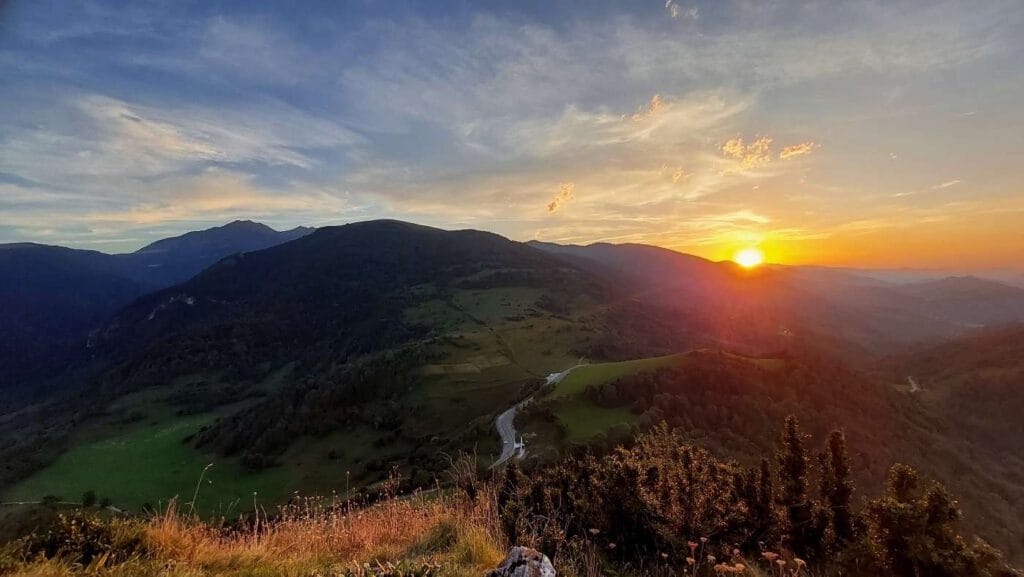
- From Belesta, the route is 14.4 kilometers with an average gradient of 3.9%. From Lavelanet, it’s 8.8 kilometers with an average gradient of 5.8%. But don’t be fooled at the beginning, because the last three kilometers have sections ranging from 9% to 14%.
- Gorges de Galamus
Besides its fascinating history, this area also boasts stunning natural phenomena, including the Gorges de Galamus. An impressive gorge approximately 500 meters deep, carved by the Agly River, it lies on the border of the Aude and Pyrénées-Orientales departments.
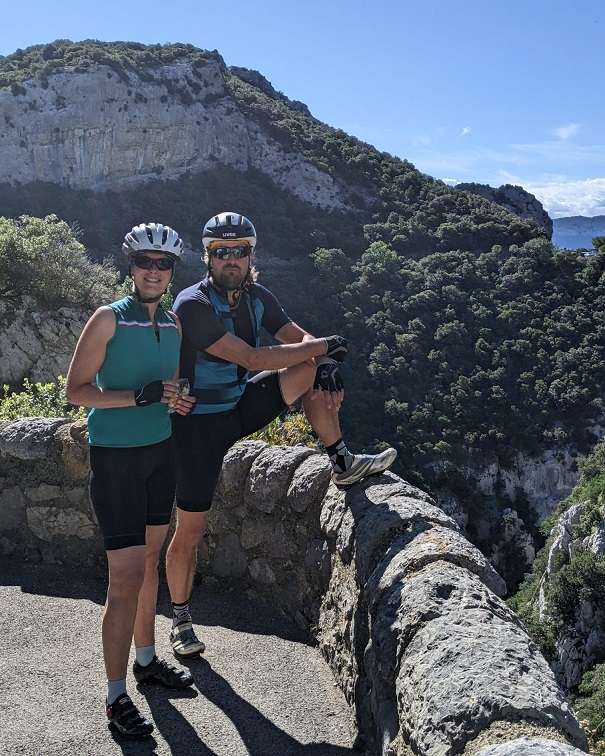
- A beautiful road carved into the steep rock face runs through the gorge, making it perfect for cycling. The road winds along the mountainside, passing under overhanging rocks and through tunnels. But be careful, as in some places the road is so narrow that two cars can barely pass each other. Several clearings have been created where you can safely stop for a photo.
- Cycling from south to north, just before the gorge, you’ll encounter a short 4-kilometer climb averaging 3% with some steep sections. Inside the gorge itself, the road is relatively flat.
Unique cycling holiday in the eastern French Pyrenees
Would you also like to cycle in the eastern part of the French Pyrenees? We offer a unique cycling E-guides and other guide services. In our guide we combine a visit to Cathar country with the higher mountains of the Ariège. Several true Tour de France classics are located there, such as the Col de Pailheres, Ax-3-Domaines, and Plateau de Beille.
And our most challenging cycling guide, the Coast-to-Coast Pyrenees, starts in the east on the Mediterranean Sea. In 10 days, you’ll cycle through the Pyrenees of France, Spain, and Andorra to the Atlantic Ocean.

